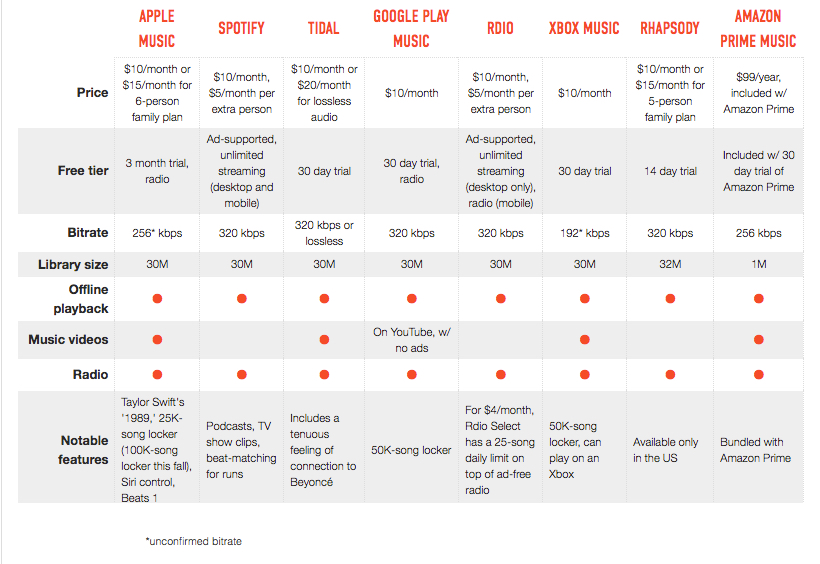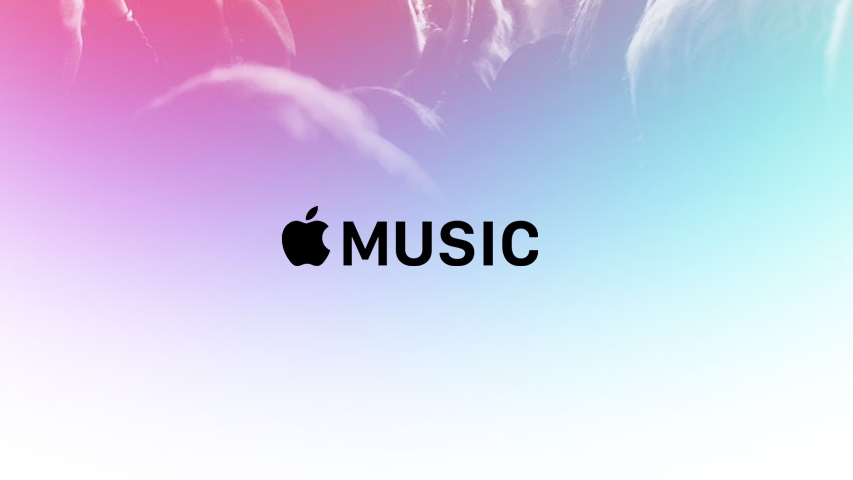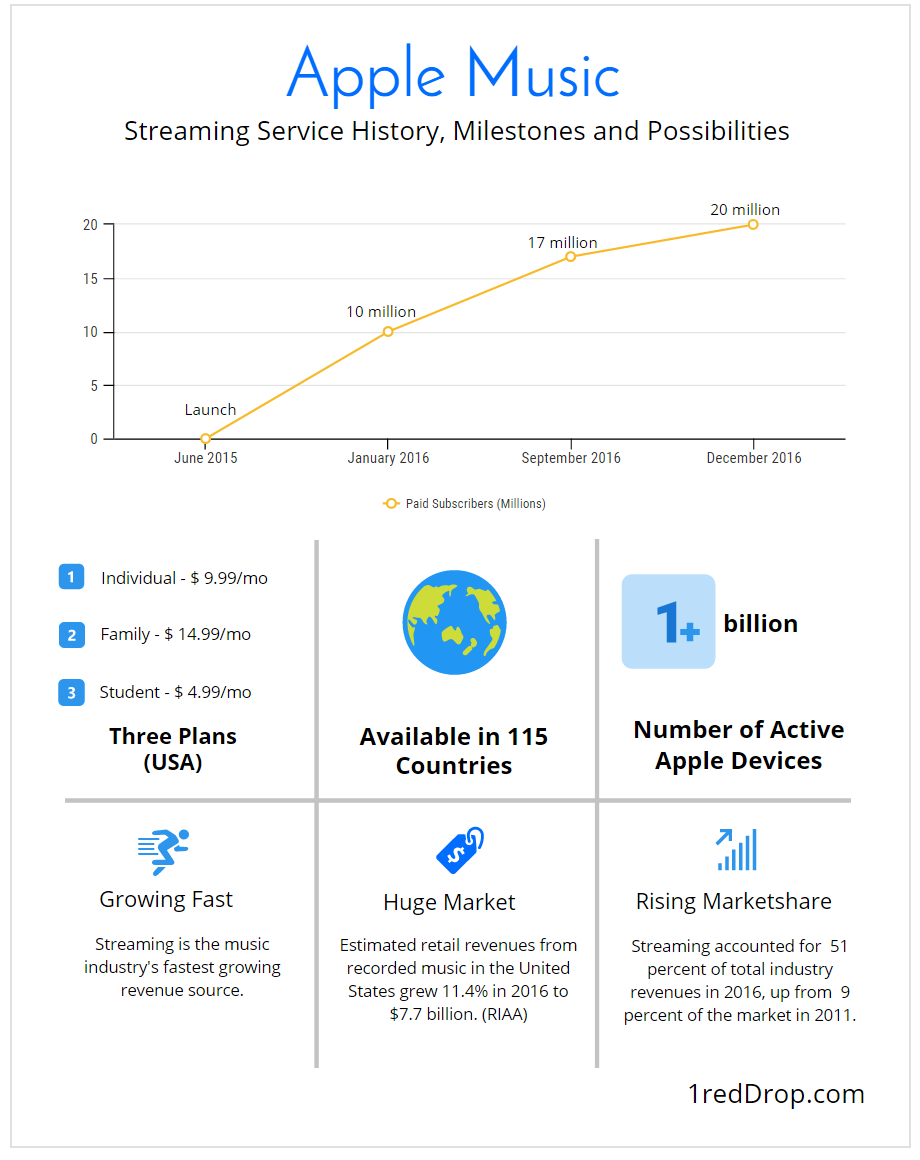Apple Music is now used by over 20 million subscribers. At less than half of Spotify’s 50 million, can Apple’s streaming music and media service eventually dominate the space? The parameters are all in place for that to happen, but the question now is whether Apple itself can push the service out to as many people as possible in its 1-billion-device user base.
The infographic below shows a snapshot of Apple Music, its growth numbers, and relevant data from the streaming music industry.
As you can see, Apple Music is well-positioned to take advantage of the rapid growth in streaming music. The entire music industry in the United States and worldwide is being lifted by the growth of voice-based smart assistants like Amazon Alexa on Echo devices and Google Assistant on Google Home.
The real question here is this: considering the fact that Apple Music is a critical component of the company’s services portfolio, can it haul ass fast enough and in a sustained manner that will allow it to compete on an even level with the likes of Spotify, or even Amazon Prime Music, for that matter?
As you can see from the infographic above, Apple Music has doubled its user base in less than a year. However, the slope of that growth curve is starting to flatten out, which is not a good sign. In order to get close to Spotify’s 50+ million paid user base, the company will need to more than double that number this year. But can it?
Stiff competition from multiple players in the space might make that a hard nut to crack. With Apple Music already covering 115 countries, going wide may not be the answer: going deep is the only way.
Here’s an interesting chart comparing Apple Music features with those of other services, originally published by The Verge in 2015. The data is a little old, obviously, but it’ll give you an idea of Apple’s positioning in the market.

In terms of library size, Apple Music is pushing the envelope. The current size is now 40 million songs, according to data from Apple. But merely increasing the size of its collection might not help rapid adoption of its service.
Here’s what Apple has done in the last six months or so:
In August 2016, Bloomberg L.P. announced that its Bloomberg Radio service is now available on Apple Music in over 100 countries around the world, including the United States, Germany, Hong Kong, and Japan. Bloomberg Radio features global business and financial news coverage from top Bloomberg journalists 24 hours a day. Regularly scheduled shows include The Bloomberg Advantage, Taking Stock, Bloomberg Law, and more.
In September 2016, Apple began rolling out new, personalized music playlists called “My New Music Mix” to Apple Music subscribers as a direct challenge to Spotify‘s “Discover Weekly” playlist.
In February 2017, Jimmy Iovine announced the branch would launch its first two television style series in Spring 2017 with the aim to turn Apple Music into a cultural platform.
There’s still a lot of work to be done if Apple Music wants to reach Spotify’s current subscriber base in the next few years, but it’s not impossible. The user base is there, the collection is there, and Siri is now waiting in the wings to be used as the “music concierge” of choice on Apple devices. It’s just a matter of time and the right marketing, something Apple has always been great at.
Thanks for reading our work! If you enjoyed it or found value, please share it using the social media share buttons on this page. If you have something to tell us, there’s a comments section right below, or you can contact@1redDrop.com us.




